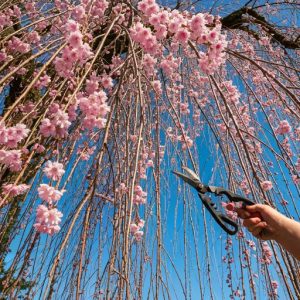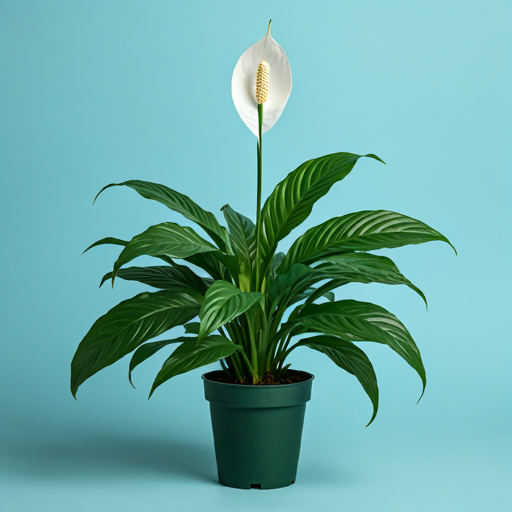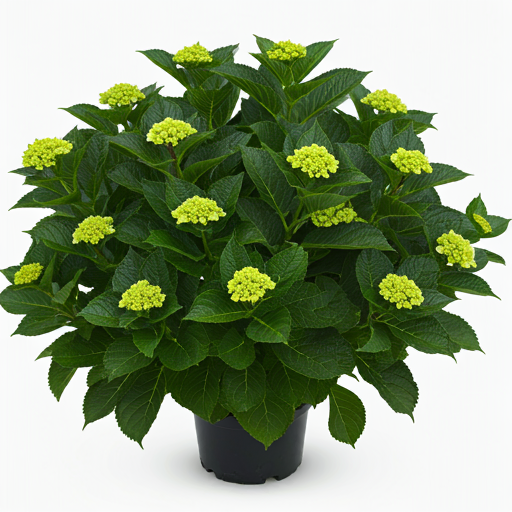Pruning a Weeping Cherry Tree in Spring: A Homesteader’s Guide
 I’m learning a lot about caring for my land and its inhabitants. One of the most rewarding aspects of this journey is tending to my fruit trees, especially the graceful weeping cherry that graces my front yard. Its delicate branches cascading like a fountain of blossoms each spring brings a sense of serenity and joy to my little slice of paradise. But just like any good friend, this beautiful tree needs a bit of care and attention to ensure its longevity and beauty.
I’m learning a lot about caring for my land and its inhabitants. One of the most rewarding aspects of this journey is tending to my fruit trees, especially the graceful weeping cherry that graces my front yard. Its delicate branches cascading like a fountain of blossoms each spring brings a sense of serenity and joy to my little slice of paradise. But just like any good friend, this beautiful tree needs a bit of care and attention to ensure its longevity and beauty.
Pruning is an essential part of caring for any fruit tree, and weeping cherries are no exception. While it may seem intimidating at first, pruning your weeping cherry in the spring can actually be a relaxing and rewarding experience. It allows you to shape the tree, encourage healthy growth, and ensure a bountiful display of blooms each year. Let me share with you the tips and techniques I’ve learned along the way, so you too can enjoy the beauty of a well-maintained weeping cherry.
Why Prune Your Weeping Cherry in Spring?
Spring is the ideal time to prune your weeping cherry for several reasons:
- Avoids disrupting the sap flow: Pruning in late winter or early spring, before the tree starts actively growing, minimizes the amount of sap loss and minimizes stress on the tree.
- Promotes healthy growth: Spring pruning allows the tree to quickly heal from any wounds, ensuring vigorous growth throughout the season.
- Encourages flowering: By removing dead, diseased, or crossing branches, you encourage the tree to focus its energy on producing new growth and flowers.
- Maintains the desired shape: Spring is the perfect time to shape your weeping cherry and maintain its elegant, cascading silhouette.
Essential Tools for Spring Pruning
Before you start pruning, make sure you have the right tools on hand. These are my go-to essentials:
- Sharp pruning shears: A good pair of sharp shears will make clean cuts and prevent damage to the tree.
- Loppers: For larger branches, loppers are essential for clean, precise cuts.
- Hand saw: If you encounter any branches that are too thick for loppers, a hand saw will be helpful. Make sure it is sharp and clean.
- Pruning sealant: While not always necessary, pruning sealant can help protect larger wounds and prevent disease.
- Gloves: These will protect your hands from thorns and sap.
Spring Pruning Techniques
Now that you have your tools ready, let’s dive into the actual pruning process. Here’s a step-by-step guide for pruning your weeping cherry in spring:
1. Assessing the Tree
The first step is to take a close look at your weeping cherry. This will help you identify any dead, diseased, or damaged branches that need removal. Pay attention to any branches that are crossing or rubbing against each other, as these can lead to injury and disease.
2. Removing Dead, Diseased, or Damaged Branches
These branches offer no benefit to the tree and can even attract pests and diseases. Make clean cuts just above a bud or branch collar (the slightly swollen area at the base of the branch).
3. Thinning the Canopy
Thinning the canopy of your weeping cherry helps to increase air circulation and sunlight penetration. This promotes healthy growth and flowering. Remove any branches that are growing too close together or crowding other branches. Make your cuts just above a bud or branch collar.
4. Shaping the Weeping Form
One of the most important aspects of pruning a weeping cherry is maintaining its beautiful, cascading form. To do this, you’ll need to remove any branches that are growing upwards or outwards, disrupting the weeping habit.
Here’s how I approach shaping my weeping cherry:
- Focus on the central leader: The central leader is the main branch that runs vertically from the base of the tree. It’s important to maintain the dominance of the central leader by removing any branches that compete for height. This keeps the tree’s structure strong and helps to maintain its weeping form.
- Prune lateral branches: Lateral branches are the branches that grow out from the central leader. These branches should be trimmed to promote the graceful weeping shape. Remove any branches that are growing too long or upwards, and prune back lateral branches to encourage a denser, fuller appearance.
- Consider the overall shape: As you prune, keep in mind the overall shape you want to achieve. You may want to focus on removing any branches that disrupt the cascading effect or create an uneven appearance.
5. Making Clean Cuts
Clean cuts are crucial for healthy wound healing. Make cuts just above a bud or branch collar, using a sharp pruning shear or loppers. Avoid cutting into the branch collar, as this can damage the tree and make it more susceptible to disease.
6. Pruning Sealant (Optional)
While not always necessary, pruning sealant can help protect larger wounds from disease and decay. Apply it to the cut surface immediately after pruning, and only use it on cuts larger than 1 inch.
Essential Considerations for Spring Pruning
Here are some additional factors to keep in mind as you prune your weeping cherry:
- Don’t prune too much: It’s best to prune in stages rather than removing too much growth at once. This will help the tree recover and adjust to the changes.
- Choose the right time: While spring is the ideal time to prune, avoid doing so during periods of extreme heat or cold.
- Consider the weather: Avoid pruning when the tree is wet, as this can increase the risk of disease.
- Inspect your tools: Always make sure your tools are clean and sharp before you begin pruning to prevent spreading disease.
- Observe the tree’s growth: Keep an eye on how your weeping cherry responds to pruning and adjust your technique accordingly.
Maintenance Throughout the Year
While spring is the primary season for pruning, there are some maintenance tasks you can do throughout the year to keep your weeping cherry healthy and thriving:
- Summer pruning: In summer, you can remove any new growth that is disrupting the weeping form or crowding other branches.
- Fall cleanup: In fall, remove any dead leaves or branches and ensure the area around the tree is clear of debris.
- Fertilization: A balanced fertilizer can help the tree to grow strong and healthy. Fertilize in early spring or late winter, following the instructions on the product label.
- Watering: Water your weeping cherry regularly, especially during periods of drought.
- Pest and disease control: Keep a watchful eye for pests and diseases and take appropriate measures to control them.
Enjoying the Fruits of Your Labor
Pruning a weeping cherry in spring is an investment in its future beauty. By taking the time to care for this graceful tree, you’ll be rewarded with a spectacular display of blossoms each year, adding a touch of elegance and serenity to your homestead. So grab your tools, head out to your yard, and let the joy of pruning fill your heart. Your weeping cherry will thank you for it!





